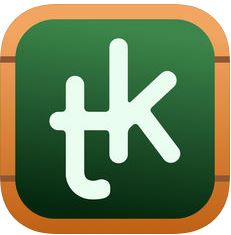Category: Reviews
With JotForm, Summer Camp Registration Couldn’t Be Easier
Every school I know offers a summer camp. Sometimes, these are for just their students but often, the community is invited in an effort to provide a safe, fun summer learning environment for all kids.
The biggest problem with summer camp has nothing to do with picking interesting subjects or lining up teachers. It’s organizing enrollees. JotForm has the camp registration solution.
If you’re not familiar with JotForm, it is the gold standard for form creation whether on PCs, Macs, or mobile devices. For your summer camp, it can be used to sign up volunteers, get feedback on events, enroll people into classes, collect payments, and more. Its drag-and-drop interface makes building a form intuitive, and quick. With a wide variety of summer camp-themed templates, it’s easily adaptable to your school or camp colors and logo. Once the form is completed, it can be shared via a link or social media, or integrated into DropBox, Google Docs, and many other popular platforms.
Share this:
- Click to share on Facebook (Opens in new window) Facebook
- Click to share on X (Opens in new window) X
- Click to share on LinkedIn (Opens in new window) LinkedIn
- Click to share on Pinterest (Opens in new window) Pinterest
- Click to share on Telegram (Opens in new window) Telegram
- Click to email a link to a friend (Opens in new window) Email
- More
Best-in-Class Resources–Last Chance to Vote
Last Change to vote for your favorite Tech Ed Tool!
Every year, I review a large number of websites, apps, and resources that help educators blend technology into their classrooms. I get lots of feedback from readers sharing their experiences, asking questions, and clicking through to see if a particular tool will serve their needs.
But, I often don’t hear how the product worked in the fullness of time.
Starting last year, I sought out your opinions:
Share this:
- Click to share on Facebook (Opens in new window) Facebook
- Click to share on X (Opens in new window) X
- Click to share on LinkedIn (Opens in new window) LinkedIn
- Click to share on Pinterest (Opens in new window) Pinterest
- Click to share on Telegram (Opens in new window) Telegram
- Click to email a link to a friend (Opens in new window) Email
- More
Math Games in the Classroom
Math games in the classroom have changed a lot in the last decades. Where they used to be fun ways to drill math concepts (with games like math bingo or math race cars), today’s games focus on higher-order thinking, sharing knowledge about math processes, and understanding concepts.
5 Popular Math Games in the Classroom
And they’re highly effective! Here are five clever approaches to gamifying your math lessons:
Gizmos
A favorite among math games in the classroom is a website called Gizmos. Gizmos offers over 400 math and science Gizmos (like super-charged simulations) that graph, measure, compare, and predict. It is aligned with most educational standards, runs on most digital devices (including desktops, Chromebooks, iOS, and Android), and can be used in whole group scenarios or 1:1.
Math Science Music
The free MathScienceMusic.org teaches STEM through music, using music to show real-world applications of mathematical or scientific concepts. It is designed for kindergarten through college and uses non-traditional methods to help students acquire STEM knowledge and think creatively. Where the content is somewhat limited, it is unique and may be the perfect approach for a diverse group of learners who might not think they like math.
Manga High
Online Manga High is a gamified math-learning ecosystem that teaches and reinforces a wide variety of math fundamentals from counting and number sense to beginning algebra and geometry. Students play the games at their own pace or work on teacher-assigned challenges. Students can earn medals, badges, and rewards, compete against students across the world, and take part in school-wide challenges against other schools. The content is aligned with Common Core Standards and includes not only math games but hundreds of tutorials and quizzes.
Planet Turtle
Planet Turtle teaches math while individualizing content for each student as they play. An advanced algorithm promotes students from one topic to the next as their learning progresses. Students scaffold math learning as the system continually reacts to their performance and provides additional exposure and review on necessary topics. Since the questions are interchangeable in activities, Planet Turtle provides appropriate content while letting students pick their favorite games. It is aligned with many math programs like Everyday Mathematics and Math Connects, as well as national math conventions.
PolyUp
Polyup is a web-based platform (and app) that provides gamified math challenges for all levels of students. With the help of a friendly avatar — Poly — students explore anything from simple operations to the Fibonacci sequence and the Birthday Problem. As students work, problems get progressively harder while offering a wide range of operations and functions to choose from. Students can even create and submit their own Poly Machines. Included on the website are teacher-oriented guides on how to use Polyup in the classroom.
Summary
These five only scratch the surface of the amazing world of gamified math lessons. What are your favorites?
More Classroom Math
Want more? Try 5 Math Games in the Classroom.
Jacqui Murray has been teaching K-18 technology for 30 years. She is the editor/author of over a hundred tech ed resources including a K-12 technology curriculum, K-8 keyboard curriculum, K-8 Digital Citizenship curriculum. She is an adjunct professor in tech ed, Master Teacher, webmaster for four blogs, an Amazon Vine Voice, CSTA presentation reviewer, freelance journalist on tech ed topics, contributor to NEA Today, and author of the tech thrillers, To Hunt a Sub and Twenty-four Days. You can find her resources at Structured Learning.
Share this:
- Click to share on Facebook (Opens in new window) Facebook
- Click to share on X (Opens in new window) X
- Click to share on LinkedIn (Opens in new window) LinkedIn
- Click to share on Pinterest (Opens in new window) Pinterest
- Click to share on Telegram (Opens in new window) Telegram
- Click to email a link to a friend (Opens in new window) Email
- More
PASCO Motion Sensor–A Must for Science Classes
 Data collection and analysis are cornerstones for many STEM and STEAM programs but they’re not just about math. They teach students how to think critically and solve evidence-based problems. Unfortunately, data collection hardware is expensive and setup is complicated–intimidating for many non-tech-minded teachers.
Data collection and analysis are cornerstones for many STEM and STEAM programs but they’re not just about math. They teach students how to think critically and solve evidence-based problems. Unfortunately, data collection hardware is expensive and setup is complicated–intimidating for many non-tech-minded teachers.
Enter award-winning PASCO Scientific with a commitment to providing innovative, affordable tools for K-12 science and math programs.
What is PASCO Scientific
PASCO Scientific is the global leader in developing technology-based solutions for hands-on science. They provide a wealth of rugged, inquiry-based products to educators in more than 100 countries around the world. Their products are wireless, Bluetooth- and/or USB-connectable, and their SPARKvue software runs on Mac and Windows platforms, Chromebooks, iPads, iPhones, and Android. No matter the technology mix in the classroom, everyone shares the same user experience, with learning focused on the subject matter not the hardware, thus simplifying classroom management for the teacher. They are NGSS-aligned as well as correlated with International Baccalaureate (IB) standards.
Among PASCO Scientific’s many devices, you’ll find:
- a wireless weather station
- a wide variety of sensors and probes
- the Ergobot to teach both Forces & Motion and Programming & Robotics.
- a wireless blood pressure and heart rate sensor
- curricula for Chemistry and Physics that are NGSS-aligned
- bridge building kits
- STEM modules
- lab equipment
- hundreds of free labs for download from their website
Most of these are simple enough for young learners with robust features for advanced applications and many come with K-12 curricular resources and support materials.
If you’ve used probes and sensors in your classes before, maybe have older ones that you struggle to set up and run, do yourself a favor and look at PASCO’s collection. I can’t review all of them in this post (it’s already long!) so let me spotlight one I particularly like: the PASCO Wireless Motion Sensor.
Share this:
- Click to share on Facebook (Opens in new window) Facebook
- Click to share on X (Opens in new window) X
- Click to share on LinkedIn (Opens in new window) LinkedIn
- Click to share on Pinterest (Opens in new window) Pinterest
- Click to share on Telegram (Opens in new window) Telegram
- Click to email a link to a friend (Opens in new window) Email
- More
It’s Here–the High School Technology Curriculum!

The High School technology curriculum prepares students for their college-and-career future not by teaching widgets and programs—though that happens—but by showing them how to use the tech they have acquired throughout their education. How do they decide what program works best for what inquiry? How do they acquire the use of tools they have never before seen? How do they self-assess their knowledge, ensuring they acquired what they need? Don’t expect black-and-white answers. Success is more likely predicated on student transfer of knowledge than their ability to check off boxes on a rubric.
Here’s a quick overview of what you will find in this textbook:
- Scope and Sequence aligned with ISTE and Common Core
- Themed units tied into inquiry
- Experiential learning with real-world applications
- Opportunities for students to express and grow in their creativity
- International mindedness
- Articles on tech pedagogy
Each Unit includes:
- an emphasis on comprehension, problem-solving, critical thinking, to prepare for career and college
- Common Core Standards covered
- ISTE Standards covered
- essential question
- big idea
- materials required
- time required to complete
- domain-specific vocabulary
- problem solving
- steps to accomplish goals
- assessment strategies
- ways to extend learning
- project examples where appropriate
- grading rubrics where appropriate
Share this:
- Click to share on Facebook (Opens in new window) Facebook
- Click to share on X (Opens in new window) X
- Click to share on LinkedIn (Opens in new window) LinkedIn
- Click to share on Pinterest (Opens in new window) Pinterest
- Click to share on Telegram (Opens in new window) Telegram
- Click to email a link to a friend (Opens in new window) Email
- More
Free Lesson Plans from Study.com
 Study.com is an online distance learning portal that provides over 70,000 lessons in fifteen subjects (including algebra, calculus, chemistry, macro- and microeconomics, and physics) aligned with many popular textbooks. Resources include not only videos but study tools, guides, quizzes, and more. You can read more detail on my Study.com review here.
Study.com is an online distance learning portal that provides over 70,000 lessons in fifteen subjects (including algebra, calculus, chemistry, macro- and microeconomics, and physics) aligned with many popular textbooks. Resources include not only videos but study tools, guides, quizzes, and more. You can read more detail on my Study.com review here.
What a lot of educators don’t know is that Study.com offers thousands of lesson plans for teachers — hundreds of them for free — to simplify lesson preparation and save time that is needed for student guidance. These lesson plans were created by teachers for all different grade levels and subject areas. They include:
- learning objectives
- materials
- length of time
- curriculum standards alignment
- key vocabulary
- instructions
- extensions
- related lessons
Once you select the lesson plan you’re interested in, you’ll see the credentials of the teacher who is providing the lesson as well as where it fits into a bigger course if that’s your interest (Though standalone, lessons often are aligned with a particular textbook). Many lesson plans include a video overview and a quiz to assess understanding of the material (though you can’t grade it without an account).
Share this:
- Click to share on Facebook (Opens in new window) Facebook
- Click to share on X (Opens in new window) X
- Click to share on LinkedIn (Opens in new window) LinkedIn
- Click to share on Pinterest (Opens in new window) Pinterest
- Click to share on Telegram (Opens in new window) Telegram
- Click to email a link to a friend (Opens in new window) Email
- More
Book Review: Repositioning Educational Leadership
 Repositioning Educational Leadership
Repositioning Educational Leadership
by James Lytle et al
4/5
The idea of using inquiry to drive change is both inspired common sense and not entirely obvious. That’s why when I heard about Repositioning Educational Leadership: Practitioners Leading from an Inquiry Stance (Teachers College Press 2018), I was thrilled to read it. Teachers are familiar with the inquiry classroom but it doesn’t always filter up to administrators.
“…educational leadership for k12 schools is increasingly complicated, as demands on educational leaders and schools continue to escalate.”
“Leaders need opportunities to learn from the ‘inside’ of other leaders’ experiences, doubts, and all. This volume addresses that need.”
The authors, James Lytle, Susan Lytle, and Michael Johanek, collected evidence from school leadership who used inquiry to solve recalcitrant problems in their schools. The result is this book with a simple rationale: Education leaders must position themselves as inquirers. They must lead from an inquiry stance.
The book is organized into three sections: Learning from and with Students, Collaborating with Teachers and the School Community, and Leading System-level Inquiry. Each chapter within the theme is written by a school leader and shares their story of how leading with inquiry solved a problem they faced. These range from struggling to serve diverse groups of students to addressing where the usual education practices were failing. I found all of them interesting and instructive, each resonating with some aspect of my own experience. In all of these, solutions included the application of inquiry–talking to students, to faculty, to groups, to parents. And listening.
Share this:
- Click to share on Facebook (Opens in new window) Facebook
- Click to share on X (Opens in new window) X
- Click to share on LinkedIn (Opens in new window) LinkedIn
- Click to share on Pinterest (Opens in new window) Pinterest
- Click to share on Telegram (Opens in new window) Telegram
- Click to email a link to a friend (Opens in new window) Email
- More
Differentiation Simplified with Study.com
 Study.com is an online distance learning portal that provides over 70,000 lessons in fifteen subjects (including algebra, calculus, chemistry, macro- and microeconomics, and physics) aligned with many popular textbooks. Resources include not only videos but study tools, guides, and more. You can read more detail on my Study.com review here.
Study.com is an online distance learning portal that provides over 70,000 lessons in fifteen subjects (including algebra, calculus, chemistry, macro- and microeconomics, and physics) aligned with many popular textbooks. Resources include not only videos but study tools, guides, and more. You can read more detail on my Study.com review here.
Today, I want to talk about Study.com’s emphasis on differentiated instruction.
When I first discovered Study.com, I was blown away by its unique approach to providing passionate learners with a college education that fit their lifestyle. If you are that person who struggles with traditional campus-based classes, has a full-time demanding job, can’t get to a campus because of transportation issues, lives on a tight budget but still values high-quality education, AND you are committed to earning a college degree, do yourself a favor and visit Study.com’s website. I’ve worked with Study.com in the past and come to realize the high value they place on differentiating instruction and meeting students where they are ready to learn, so when they wanted to share the news of their online class teaching the basics of differentiating in the classroom, they knew I would want to help.
To me and many other educators:
Differentiated instruction is at the core of effective teaching.
What is differentiation?
Differentiated learning can be defined this way:
With differentiated instruction, teachers proactively create options to accommodate a diverse range of learners while keeping the whole class on track. Teachers observe students carefully in order to design experiences that match the learning styles of the class and the differing levels of ability and understanding. —Study.com
You might call it ‘personalized learning’ or even ‘blended learning’ but at its most basic, differentiated learning is teaching in ways that best serve individual students–providing different resources and lesson plans to suit different learning styles. If for you, the term ‘differentiation’ should always be followed with, “Where am I supposed to find the time?“, it’s because too often, differentiation is conflated with the tedium of creating individual lesson plans for each and every student. Me, I’ve never done that. Instead, I offer a variety of media that address the lesson. Students do the work of picking what is best for them and selecting the assessment medium best suited to their communication style be it audio, video, text, visual, music, art, or another.
Key principles of differentiation
Share this:
- Click to share on Facebook (Opens in new window) Facebook
- Click to share on X (Opens in new window) X
- Click to share on LinkedIn (Opens in new window) LinkedIn
- Click to share on Pinterest (Opens in new window) Pinterest
- Click to share on Telegram (Opens in new window) Telegram
- Click to email a link to a friend (Opens in new window) Email
- More
Great News: JotForm now offers a PDF Editor
![]() Forms are popular in schools for all sorts of reasons. Some teachers look no further than Google Forms but for those who require greater simplicity and sophistication in a form builder, as well as agility and rigor, free JotForm (premium edition also available) is an excellent option. It works on PCs, Macs, and mobile devices and offers what seems like an endless supply of professional-looking templates for tasks like performance evaluations, permission slips, volunteer sign-ups, feedback on events, asking for donations, collecting payments, providing contact information, and more. Its drag-and-drop interface makes building forms intuitive, quick, and easy. And the completed form can be pushed out via link, embed, or email. Here’s my review if you’re looking for more details.
Forms are popular in schools for all sorts of reasons. Some teachers look no further than Google Forms but for those who require greater simplicity and sophistication in a form builder, as well as agility and rigor, free JotForm (premium edition also available) is an excellent option. It works on PCs, Macs, and mobile devices and offers what seems like an endless supply of professional-looking templates for tasks like performance evaluations, permission slips, volunteer sign-ups, feedback on events, asking for donations, collecting payments, providing contact information, and more. Its drag-and-drop interface makes building forms intuitive, quick, and easy. And the completed form can be pushed out via link, embed, or email. Here’s my review if you’re looking for more details.
If you already use JotForm, here’s some great news: JotForm has kicked it up a notch by offering a free PDF editor.
Why a PDF Editor?
Every teacher I know must edit a PDF at some time in the school year. Maybe they want to customize an existing PDF for use in their class, or a form they created requires that sort of versatility. PDF Readers are common (like Adobe Reader) but editing one is trickier. If President Trump’s campaign chairman Paul Manafort had one, it would have changed his life dramatically (click the link to read more of this story–and thanks to the JotForm folks for pointing this out to me). Many school documents are shared in PDF format for ease of use on multiple platforms as well as security from being hacked or edited. The biggest reason by far why my colleagues require a PDF editor is that too often, the underlying document is lost and the teacher has nothing left but the PDF.
That’s when a PDF editor becomes critical. Click here for JotForms’ Complete Guide to Editing PDFs.
Share this:
- Click to share on Facebook (Opens in new window) Facebook
- Click to share on X (Opens in new window) X
- Click to share on LinkedIn (Opens in new window) LinkedIn
- Click to share on Pinterest (Opens in new window) Pinterest
- Click to share on Telegram (Opens in new window) Telegram
- Click to email a link to a friend (Opens in new window) Email
- More
TeacherKit Saves You Time by Managing Class Tasks
 TeacherKit, a useful classroom management app for iOS or Android, provides teachers with one location to log student attendance, take note of student behavior, record grades, create student-level reporting, and other tedious tasks that traditionally take time away from teaching. The intuitive interface allows all this to be done with quick taps and swipes, generating data visualizations on the fly, both for whole classes and individual students. The student-profile system allows teachers to quickly contact students and parents via email, and the premium version adds the ability to send detailed progress reports, complete with behavior and attendance breakdowns. Plus, teachers can send announcements to an entire class, letting them know a date change, assignment due dates, and/or to update class information.
TeacherKit, a useful classroom management app for iOS or Android, provides teachers with one location to log student attendance, take note of student behavior, record grades, create student-level reporting, and other tedious tasks that traditionally take time away from teaching. The intuitive interface allows all this to be done with quick taps and swipes, generating data visualizations on the fly, both for whole classes and individual students. The student-profile system allows teachers to quickly contact students and parents via email, and the premium version adds the ability to send detailed progress reports, complete with behavior and attendance breakdowns. Plus, teachers can send announcements to an entire class, letting them know a date change, assignment due dates, and/or to update class information.
TeacherKit is a global Microsoft and Tradeline Strategic Education Partner with over 1 million teacher users around the world.
How it works
TeacherKit is easy to initiate and intuitive to use. Simply download the app from iTunes or Google Play and build classes. Students can be added via your class list, from other classes, or by photo. Once the class is set up, you can generate reports that summarize grades, behaviors, and more by class or student. Reports can be shared (as a PDF) via email or print. Optional reports include an overall class report, student performance, student/class grades, a class seating chart, and attendance. Here are samples of several:
Share this:
- Click to share on Facebook (Opens in new window) Facebook
- Click to share on X (Opens in new window) X
- Click to share on LinkedIn (Opens in new window) LinkedIn
- Click to share on Pinterest (Opens in new window) Pinterest
- Click to share on Telegram (Opens in new window) Telegram
- Click to email a link to a friend (Opens in new window) Email
- More






































